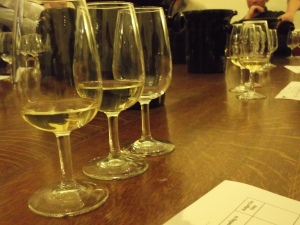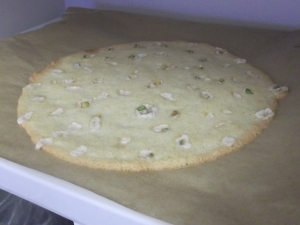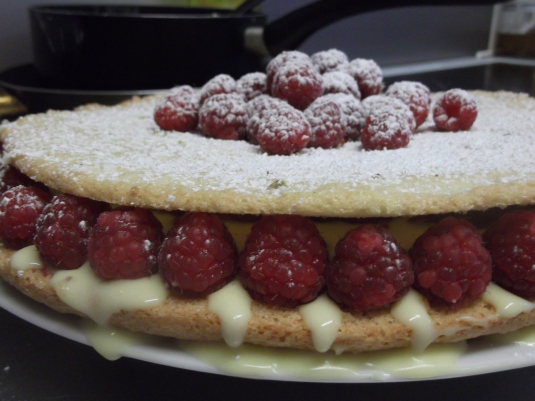This is a guest post my a friend of mine, Joe. These look delicious- great job Joe- just a pity I wasn’t there to taste them.
Cooking exotic food can be intimidating. The ingredients can often be difficult to obtain, and when you use substitute ingredients, it doesn’t turn out quite right. With traditional dishes, memories of cooking with parents and grandparents make them feel achievable. Even slightly further afield, my long and happy history of eating other European dishes reassures me that I’ll be able to reproduce them. As a result, it is easy to develop a chronic imbalance in confidence. For me, this was typified by gyoza, a filled dumpling always first in my order when I eat at Japanese restaurants. I had imagined that some sort of wizardry was involved in their construction. After learning to make sushi this week (which still feels like preparing an incantation, even after learning some of the secrets), and with a salt-toothed girlfriend to please, we steeled ourselves for an attempt.
The results were reassuringly close to the real deal. Yaki gyoza have a delicious variation in texture, arising from flash frying one side before steaming, which is more or less fool-proof. Making the filling is even easier. The only real sticking point is stretching a dough thin enough to achieve the delicacy gyoza-lovers will recognise. This is a real challenge and, first timers as we were, we didn’t quite satisfy on this front. I’m told ready made wrappers can be found in asian supermarkets (for a soft option). However, having since made them again, I can say that the results are rewarding if you have time and patience to achieve a thinner finish. The lesson here is that exotic recipes don’t necessarily tax a different skill-set from familiar ones (and that Japanese food is really excellent).
Yaki Gyoza
Makes at least 16 (serves 2 for a main, or 4 as a starter)
Ingredients:
Gyoza wrappers
150g strong white flour, plus extra for rolling
pinch salt
100ml boiling water
vegetable oil, for frying
Prawn filling
200g prawns, cooked and finely chopped
1 bunch spring onion, finely chopped
2cm piece fresh root ginger, peeled and grated
sesame oil
oyster sauce
lemon zest
salt and black pepper
Dipping sauce
soy sauce
rice vinegar
sugar
Recipe:
1. Prepare the dough. Sift the flour into a large bowl and mix in a pinch of salt. Bring some water to the boil and add slowly to the flour, stirring with a knife or chopsticks, until the mixture comes together. Beware making the dough too wet. Let the dough rest for 1 hour.
2. Meanwhile prepare the filling. Combine the prawns, spring onion and ginger with a generous glug each of sesame oil and oyster sauce. Season generously (taste bearing in mind that the seasoning needs to lift the flavour of the dough too).
3. Make the gyoza. On a generously floured surface, knead gyoza dough until smooth and elastic. Roll as thin as possible and cut into circles of diameter ~10cm. Place a large teaspoon of the filling in the centre of each wrapper, wet the edges, and crimp to achieve a cornish pasty shape. Pinch tightly to seal.
4. Cook the gyoza. First heat a glug of vegetable oil over high heat in a shallow pan with a lid. Fry the gyoza until golden brown. Immediately add ~100ml of water and cover with the lid. The dumplings now need to steam for two minutes, so do not remove the lid. Beware the dummplings sticking to the pan; the word Gyoza is taken from the chinese Jiǎozi or “pot sticker”! Using a decent amount of oil and shaking the pan from time to time should keep everything on track.
5. Serve the gyoza. Scoop out the dumplings and serve immediately with your choice of dipping sauce. I like the acidity from rice vinegar, but chilli heat works great too. The filling is of course enormously flexible; any east Asian flavours will be delicious, but make sure it packs plenty of umami. The dumplings can also be deep fried (age gyoza) or boiled (sui gyoza) but the above is the tastiest and simplest method.









